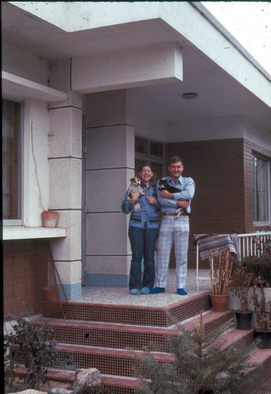 =0=
=0=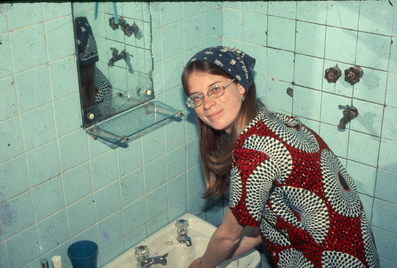 =0=
=0=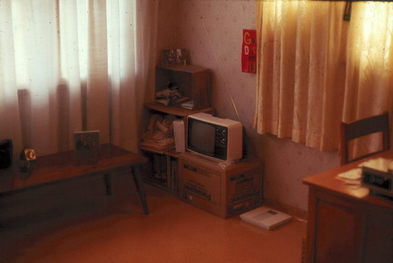 =0=
=0= =0=
=0= =0=
=0=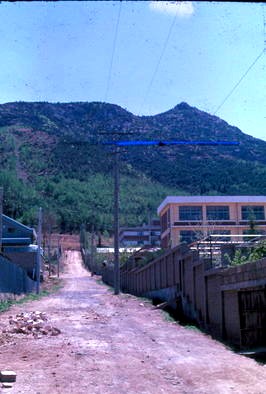 =0=
=0= =0=
=0= =0=
=0= =0=
=0=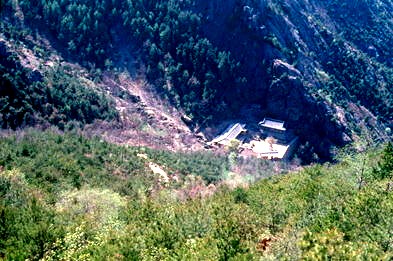 =0=
=0= =0=
=0=| This is the front of the second house we stayed in. This is Debbie and Dave. Debbis is holding her dog Ellis and Dave is holding one of the cats, Goyanggi, which means cat in Korean. Along the left of this picture is the window to our bedroom where we did most everything, eat, sleep, have visitors, etc.. |  =0=
=0= |
| Here is Barbara washing her hands in the bathroom. This was an older house, perhaps five years old, and it not such good condition, but good enough. |  =0=
=0= |
| This is our bedroom in the second house. Much of our furnutre was just boxes as you can see in this picture. Things were pretty neat before the babies came. |  =0=
=0= |
| And this is how things looked after the babies came. What babies, you might say? Well, when I made the tape (which goes with these slides) everyone knew the broad outlines of that story. Those pictures are avaliable in another series. come up. Sorry! If it was raining out (which was often the case), you had to dry the laundry indoors leaving wet clothes hanging whereever you would need to walk (dodging laundry got to be a way of life). There was the fan in case it got hot, the lamp in case the babies woke (and we didn't want to turn on the overhead light), and all the babies stuff. Much more cluttered. |  =0=
=0= |
| This is a view of Apsan (the mountain) along one of the side streets in Daegu. Apsan dominates over the whole city of Daegu, especially the part of Daegu that we lived in. Both the houses we lived in each had a large window (almost the whole wall) which had a view of Apsan. So, for several months we had the regular view of Apsan with a growing mantra of 'climb Apsan' as it is not only a beautiful mountain, but also so approacable and, while obviously not an easy climb, certainly climbable.. |  =0=
=0= |
| This is the view of Apsan on the street we lived on in the second house. Do you notice the potholes on the left where burnt yuntun have been used to fill in the pothole (at least temporarily). On the right a little up the street is a school for retarded Korean children. The house we were renting had been built as a perk for the principal of the school. However, the current principal had been a teacher there before being made principal and had bought a small old style house in the compound close by. It is just inside the little four foot tall portal that is on the right (the board crosses the drainage ditch to the compound). They were happy enough in the their house and so rented it to foriegners, generally American soldiers and their families.... Anyway, we started off headed up this road to finally take on the challenge of Apsan. |  =0=
=0= |
| This is a view once you were out of the city of Daegu and in the foothills. |  =0=
=0= |
| This is a view of the mountain as we were headed up the mountain. We didn't choose any particular path up the mountain and instead just went to the nearest ridge and started heading up the ridge. As mentioned previously, the Japanese had cut down the trees on Korea's mountains during WWII. So, all the trees on the way were three to five feet tall (sometimes as tall as eight feet), which was the worst height for making easy progress. Short trees (less than two feet) you can just step over. Really tall trees don't commonly have lower branches and you can walk under them. However, trees of this height you pretty much had to walk between or through, making for slow going (and not many nice views). This was one of the view nice views we saw on the way up. |  =0=
=0= |
| Along the way there was pretty foliage. Here is Barbara's hand with some pretty flowers that we saw along the way. |  =0=
=0= |
| Once we were pretty far up the mountain, we turned back and saw this Budhist monastery further down. Most of the Korean Budhist monasteries were located on the side of mountains. |  =0=
=0= |
| As we continued climbing, we finally saw the final granite peak which is shown here as Barbara was making the final ascent..... |  =0=
=0= |
This page was last updated on July 29, 2007.